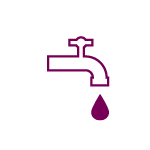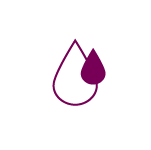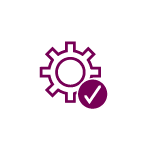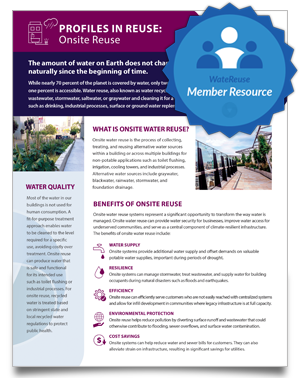Onsite and Decentralized Reuse
What is Onsite Water Reuse?
Onsite water reuse is the process of collecting, treating, and reusing alternative water sources within a building or across multiple buildings for applications such as toilet flushing, irrigation, cooling towers, and industrial processes. Alternative water sources include graywater, blackwater, rainwater, stormwater, and foundation drainage.
Benefits of Onsite Reuse
Onsite water reuse systems represent a significant opportunity to transform the way water is managed. Onsite water reuse can provide water security for businesses, improve water access for underserved communities, and serve as a central component of resilient infrastructure. The benefits of onsite water reuse include:

Water Supply
Onsite systems provide additional water supply and offset demands on valuable potable water supplies, important during periods of drought.

Resilience
Onsite systems can manage stormwater, treat wastewater, and supply water for building occupants during natural disasters such as floods and earthquakes.

Efficiency
Onsite reuse can efficiently serve customers who are not easily reached with centralized systems and allow for infill development in communities where legacy infrastructure is at full capacity.

Environmental Protection
Onsite reuse helps reduce pollution by diverting surface runoff and wastewater that could otherwise contribute to flooding, sewer overflows, and surface water contamination.

Cost Savings
Onsite systems can help reduce water and sewer bills for customers. They can also alleviate strain on infrastructure, resulting in significant savings for utilities.
Water Quality
Most of the water in our buildings is not used for human consumption. A fit-for-purpose treatment approach enables water to be cleaned to the level required for a specific use, avoiding costly over treatment. Onsite reuse can produce water that is safe and functional for its intended use such as toilet flushing or industrial processes. For onsite reuse, recycled water is treated based on stringent state and local recycled water regulations to protect public health.

Check out the most recent guidebooks, research, and case studies about onsite water reuse!
Examples of Onsite Water Reuse
Communities and businesses have adopted a wide variety of onsite and distributed water reuse systems to meet needs such as improving water quality, resiliency, and availability.
Transforming Water Management | San Francisco, California
Led by the efforts of the San Francisco Public Utilities Commission, San Francisco became the first municipality in the United States to adopt a program that encourages buildings to collect, treat, and reuse water onsite to meet non-potable demands such as toilet flushing and irrigation. San Francisco’s Onsite Water Reuse Program streamlines the process of permitting alternate water sources, such as rainwater, stormwater, foundation drainage, graywater, and wastewater, to be reused in commercial, mixed-use, and residential buildings. This effort has led to innovative projects like the Fifteen Fifty development, a residential high-rise with a membrane bioreactor system to treat up to 7,500 gallons per day of graywater.
Permitting and Development Center | Austin, Texas
Austin Water opened a new city building in 2022 with two cutting-edge systems to demonstrate onsite reuse. OSCAR (On-Site Collection and Reuse) is a fit-for-purpose rainwater and air-conditioning condensate reuse system that supplements CLARA (Closed-Loop Advanced Reclaimed Assembly), the building’s blackwater recycling system. The project is anticipated to save the City of Austin almost one and half million gallons of drinking water annually, and to reduce the site’s potable water use by 75%.
Emory University | Atlanta, Georgia
The WaterHub at Emory University conserves water, protects the environment, and advances research. The system is designed to recycle up to 400,000 gallons of municipal wastewater per day, reducing Emory’s total water demand by 40%. The recycled water fills boilers, cooling systems, and toilets on campus. A thriving greenhouse serves as part of the treatment process as well as a center for research and education.
Allianz Field | St. Paul, Minnesota
A little rain can’t stop Minnesota United FC, the soccer team that plays on top of an innovative rainwater reuse system developed by the City of Saint Paul and Capitol Region Watershed District. The system includes a 675,000-gallon underground storage tank and a “smart hub” that adjusts based on weather forecasts. The treated water serves stadium toilets, laundry, and irrigation, and will supply irrigation at future nearby developments. Reusing rooftop runoff was important for developing this site, where infiltration was restricted due to contamination from historic land use.
Battery Park | New York, New York
Within the Battery Park City development, six separate in-building reuse systems treat a total of 165,000 gallons of wastewater and rainwater per day to provide non-potable water to seven buildings and a public park. Reuse reduces local strain on the city’s overtaxed combined sewer system, minimizing overflows and flooding while providing water to cool the building and irrigate green roofs. Thermal energy recovery systems use building heat to reduce the energy demand.

